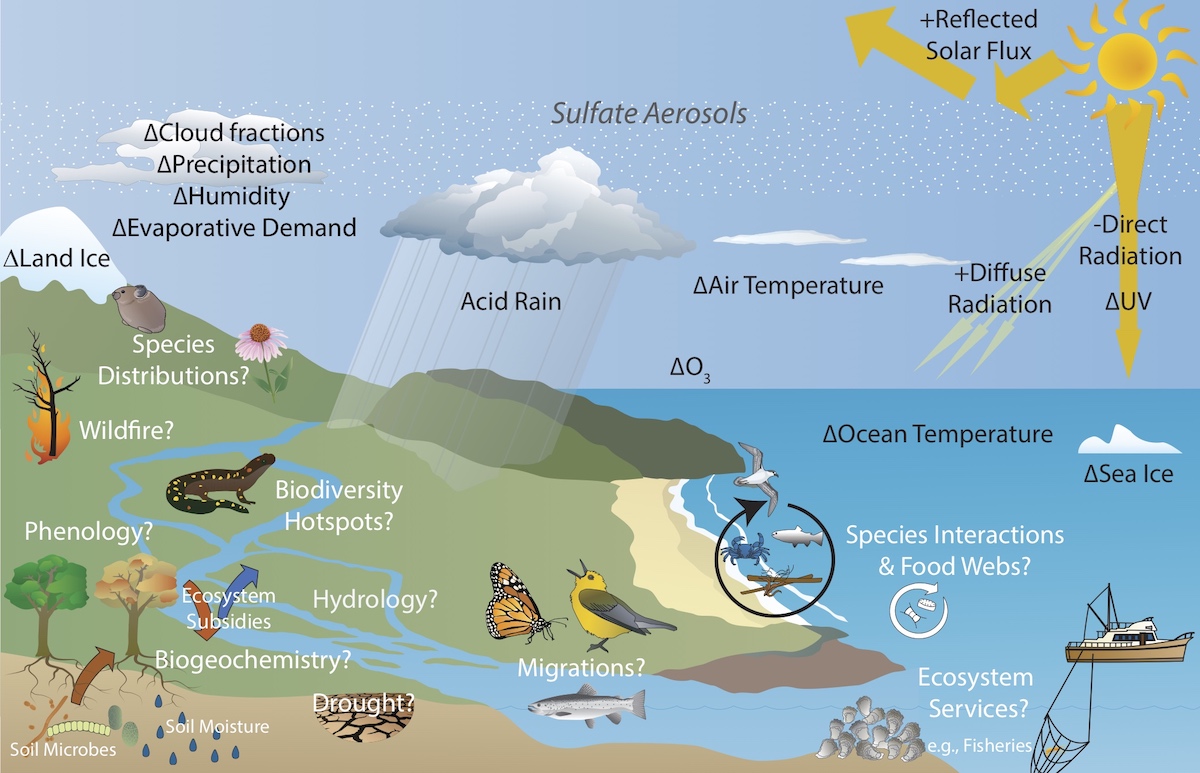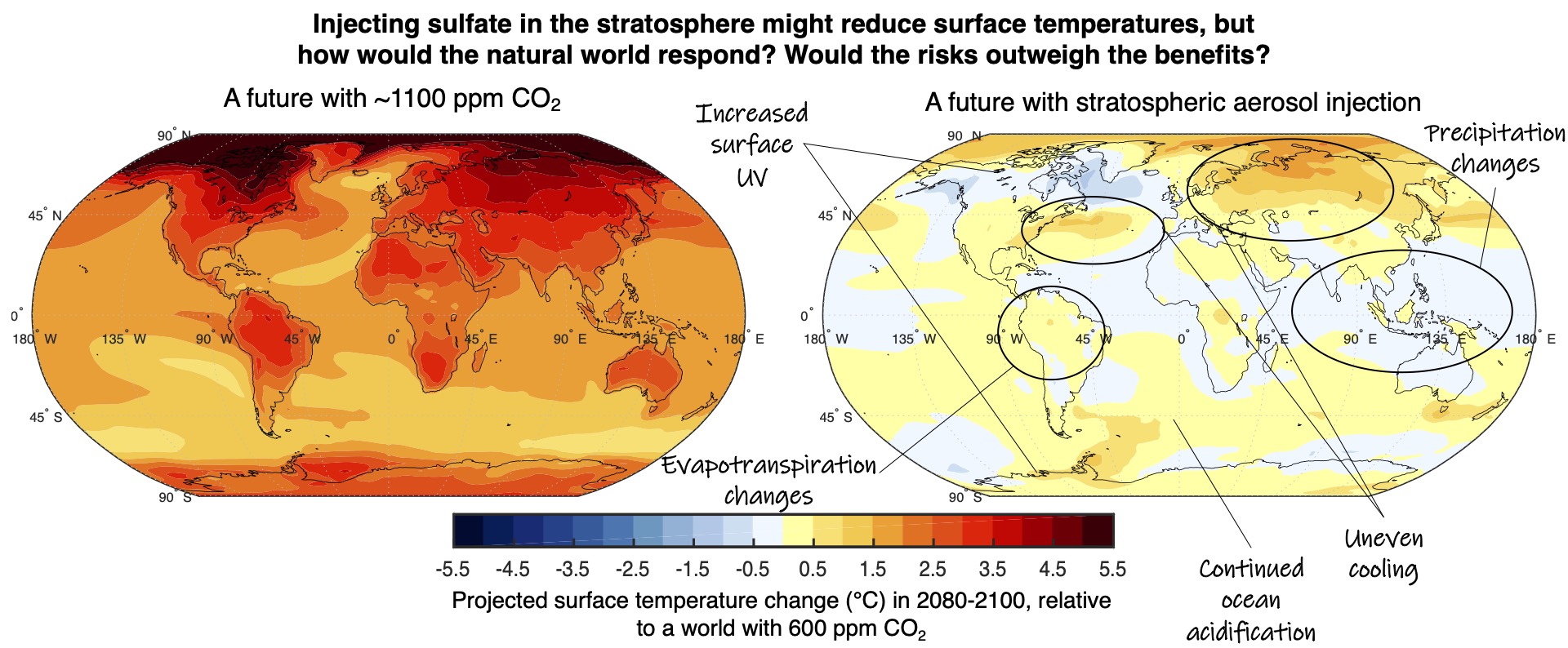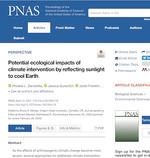Investigating potential ecological impacts of climate intervention by reflecting sunlight to cool Earth
This website highlights collaborative and interdisciplinary research from members of a National Science Foundation funded Workshop on ecological impacts of solar radiation modification (SRM) geoengineering.

The goal of the Climate Intervention Biology Working Group is to study the potential ecological impacts and risks of solar geoengineering, and provide information on those impacts and risks. This working group does not endorse or advocate either testing or actual implementation of geoengineering.

Above: Projected surface temperature change in 2081-2100 in a scenario without mitigation compared with one where emissions are reduced (left) and in a scenario without mitigation, but with stratospheric aerosol injections (SAI) (right). Although SAI may cool the planet down to a certain global temperature target, the local cooling may be uneven, and there are potentially large impacts on ecosystems (right). Credit: Daniele Visioni, adapted from Visioni et al. (in review, 2021)
Acknowledgments
This research is funded by the National Science Foundation: [2019-2021];
We thank the Computational and Information Systems Lab at the National Center for Atmospheric Research, Michigan State University, and Stony Brook University for facilitating this research.




